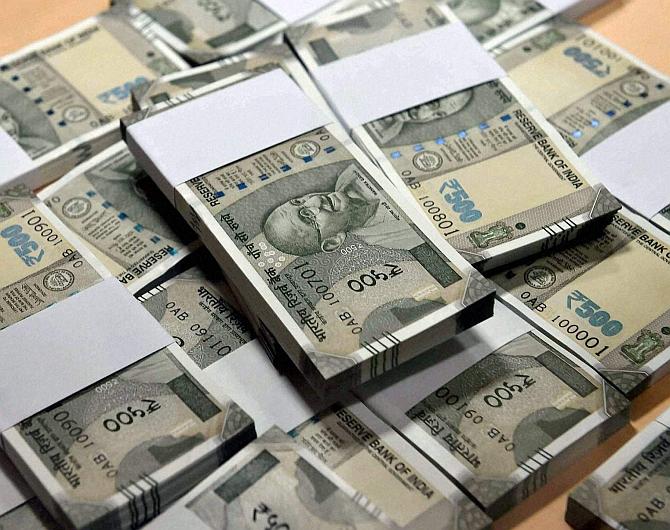Uncertainties on account of COVID-19 pandemic have increased the demand for currency notes not only in India but across the globe, official sources said, dismissing the criticism that demonetisation has failed to reduce cash in the economy.

Government sources said that growth of the digital payments system post-demonetisation will ultimately curb the dependence on cash.
Official data points out a jump in digital payments through different modes, including plastic cards, net banking and Unified Payments Interface (UPI).
UPI of the National Payments Corporation of India (NPCI) is fast emerging as a major medium of payment in the country.
UPI was launched in 2016, and the transactions have been growing month-on-month barring a few blips.
In October 2021, the transactions in value terms stood at over Rs 7.71 lakh crore or over $100 billion.
A total of 421 crore transactions were done through UPI in October.
Sources also pointed out that even in the US, total currency in circulation soared to $2.07 trillion by the end of 2020 - a 16 per cent gain from a year earlier, and was also the biggest one-year percentage increase since 1945.
Demand for liquidity always increases during periods of economic uncertainty and since cash is the most liquid form of asset, the increase in cash during the period of enormous uncertainty is expected, sources said, adding, the larger holding of cash in the pandemic year has been a world-wide phenomenon.
Observing that demand for currency depends upon several macro-economic factors, including economic growth and level of interest rates, sources said, the precautionary demand generated by the public during 2020-21 due to the COVID-19 pandemic induced uncertainties is also an important factor in currency demand.
The current increase in Currency-in-Circulation (CiC) during 2020-21 has been 17.2 per cent in value terms, which is in line with past trends, when viewed in conjunction with the COVID-19 pandemic induced demand, sources said.
The long-term average increase in CiC during the last 20 years has been 15 per cent.
As a percentage of GDP, sources said, CiC has remained between 11-12 per cent during the last decade, but a combination of greater public demand for cash and a huge contraction in GDP, has led to an increase in CiC as a percentage of GDP, from 12 per cent during 2019-20 to 14.5 per cent during 2020-21.
According to the latest Reserve Bank data, the notes in circulation in value terms soared from Rs 17.74 lakh crore on November 4, 2016, to Rs 29.17 lakh crore on October 29, 2021.
Highlighting benefits of demonetisation, sources said, it has increased the trend towards greater formalisation of the economy and towards increased digitisation of payments.
Similarly, some of the reports pointed out that the number of counterfeit notes in the economy has decreased by 1.1 lakh between FY'19 to FY'21, thereby attaining another important goal of demonetisation.
In view of the above, sources said, it is clear that demonetisation was primarily intended to remove black money and counterfeit notes from circulation and increase digitalisation with the ultimate aim to replace cash with digital payment systems.
These objectives have been achieved but the process of greater digitisation is an ongoing exercise, sources said.
The increase of CiC now only indicates that at certain points in time, cash and digitisation can co-exist and that in times of any uncertainty, like COVID-19 pandemic induced uncertainty, people may make digital payments, but hold on to cash as a liquid asset as a precautionary measure, sources added.
On November 8, five years ago, Prime Minister Narendra Modi had announced the demonetisation of old Rs 1,000 and Rs 500 banknotes and one of the key objectives of the unprecedented decision was to promote digital payments and curb black money flows.
Following the withdrawal of the then prevailing Rs 500 and Rs 1,000 notes as part of demonetisation, the government had introduced new Rs 2,000 currency notes as part of re-monetisation.
It also introduced a new series of Rs 500 notes.
Later, a new denomination of Rs 200 was also added.
In value terms, the share of Rs 500 and Rs 2,000 banknotes together accounted for 85.7 per cent of the total value of banknotes in circulation as on March 31, 2021, as against 83.4 per cent as on March 31, 2020.
Photograph: PTI Photo










